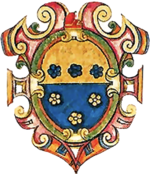
The Basilica dei Santi Giovanni e Paolo, known in Venetian as San Zanipolo, is a church in the Castello sestiere of Venice, Italy.

Leonardo Loredan was a Venetian nobleman and statesman who reigned as the 75th Doge of Venice from 1501 until his death in 1521. As a wartime ruler, he was one of the most important doges in the history of Venice. In the dramatic events of the early 16th century, Loredan's Machiavellian plots and cunning political manoeuvres against the League of Cambrai, the Ottomans, the Mamluks, the Pope, the Republic of Genoa, the Holy Roman Empire, the French, the Egyptians and the Portuguese saved Venice from downfall.

The Contarini is one of the founding families of Venice and one of the oldest families of the Italian Nobility. In total eight Doges to the Republic of Venice emerged from this family, as well as 44 Procurators of San Marco, numerous ambassadors, diplomats and other notables. Among the ruling families of the republic, they held the most seats in the Great Council of Venice from the period before the Serrata del Maggior Consiglio when Councillors were elected annually to the end of the republic in 1797. The Contarini claimed to be of Roman origin through their patrilineal descendance of the Aurelii Cottae, a branch of the Roman family Aurelia, and traditionally trace their lineage back to Gaius Aurelius Cotta, consul of the Roman Republic in 252 BC and 248 BC.
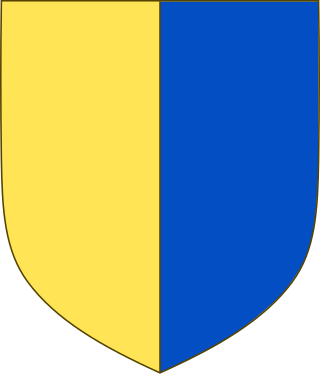
The House of Cornaro or Corner were a Venetian patrician family in the Republic of Venice and included many Doges and other high officials. The name Corner, originally from the Venetian dialect, was adopted in the eighteenth century. The older standard Italian Cornaro is no longer common in Italian sources referring to earlier members of the family, but remains so in English.
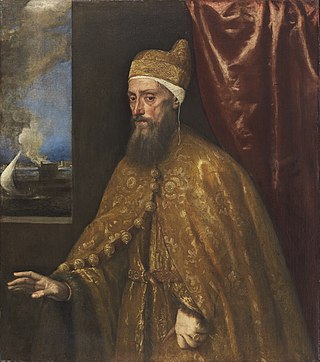
Francesco Venier was the Doge of Venice from 1554 to his death in 1556.

Giovanni di Mocenigo was doge of Venice from 1478 to 1485. He fought at sea against the Ottoman Sultan Mehmed II and on land against Ercole I d'Este, duke of Ferrara, from whom he recaptured Rovigo and the Polesine. He was interred in the Basilica di Santi Giovanni e Paolo, a traditional burial place of the doges. His dogaressa was Taddea Michiel, who was to be the last dogaressa to be crowned in Venice until Zilia Dandolo in 1557, almost a century later. His brother, Pietro Mocenigo, served as Doge before him, in 1474–1476.

The House of Loredan is a Venetian noble family of supposed ancient Roman origin, which has played a significant role in shaping the history of the entire Mediterranean. A political dynasty, the family has throughout the centuries produced a number of famous personalities: doges, statesmen, magnates, financiers, diplomats, procurators, military commanders, naval captains, church dignitaries, and writers.
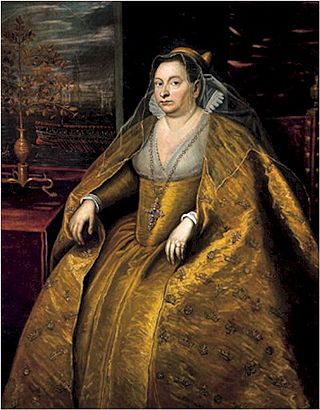
Dogaressa was the official title of the wife of the Doge of Venice. The title was unique for Venice: while the heads of the Republic of Genoa were also called Doge, the wives of the Doges of Genoa were not called Dogaressa, nor did they have such a public position.

Francesco Loredan was a Venetian statesman and magnate who served as the 116th Doge of Venice from 18 March 1752 until his death in 1762. He was a member of the noble House of Loredan, head of its Santo Stefano branch, and the only Doge, as well as the last male, to be awarded the Golden Rose by the Papacy.

The island of Cyprus was an overseas possession of the Republic of Venice from 1489, when the independent Kingdom of Cyprus ended, until 1571, when the island was conquered by the Ottoman Empire.

The Palazzo Loredan Cini is a Gothic-style palace located between the Palazzo Balbi Valier and the Rio San Vio on the Grand Canal, in the sestiere of Dorsoduro, Venice, Italy. The palace was formed from the amalgamation of the former Palazzo Foscari-Loredan with the adjacent Palazzo Grimani. The narrow facade on the Canal has no entrance, but the facade to the north on the Rio, has a single water door, and is connected to the adjacent campo by a bridge. The facade is decorated with two poliforas.
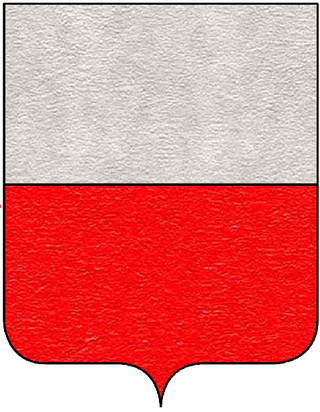
The House of Dandolo was a patrician family of the Republic of Venice, which produced four Doges of Venice. The progenitor of the family was a merchant named Domenico. The family became more successful by the beginning of the 12th century.
This is an alphabetical index of people, places, things, and concepts related to or originating from the Republic of Venice. Feel free to add more, and create missing pages.
Caterina Loredan of the noble Loredan family was the Dogaressa of Venice from 1521 to 1523 by marriage to Doge Antonio Grimani.
Loredan is a Venetian surname. The House of Loredan is an aristocratic Venetian family that included various doges of the Republic of Venice, and the surname is almost exclusively associated with the family. The surname most likely originated from the toponym Loreo, which itself originated from its Latin name Lauretum, meaning laurel. Another theory of the origin of the surname, though most likely legendary, is that it comes from the Latin epithet Laureati, given to ancestors of the Loredan family due to their historical glory in ancient Rome and the many victories they achieved in battles. The surname is spelled Loredano or Loredan in Italian, Lauredano or Lauredanus in Latin, and Lorentano (Λορεντάνο) in Greek, though it is also historically found as Lordas (Λορδᾶς) and Lordano (Λορδάνο). The feminine name Loredana, common in Italy and Romania, was likely inspired by the surname.
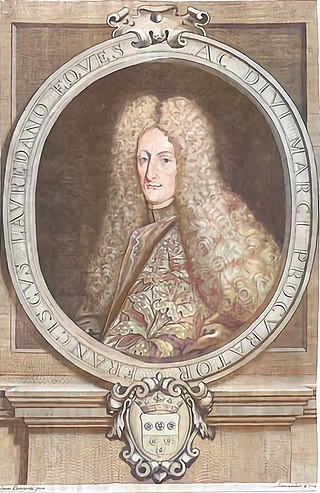
Francesco Loredan was a Venetian magnate and nobleman of the Loredan family, and an ambassador of the Republic of Venice to Vienna during the peace negotiations between the Ottoman Empire and the Holy League, which resulted in the Treaty of Karlowitz (1699).
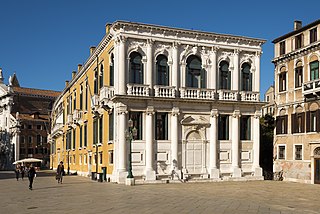
The Palazzo Loredan at Campo Santo Stefano is a palace in the San Marco district of Venice, overlooking Campo Santo Stefano. Before the acquisition by the Loredan family in 1536 and the restoration by the architect Antonio Abbondi, it was a group of adjacent buildings, in the Gothic style, belonging to the Mocenigo family. The purchased buildings were substantially restored and made into a single building for the residence of the wealthy noble family of Loredan. The palace has throughout history been home to at least seven Doges of Venice.

The Tomb of Doge Leonardo Loredan is a monumental 16th-century burial site located in the Basilica of Saints John and Paul in Venice, Italy. Interred in it are Leonardo Loredan, 75th Doge of Venice, and his descendant Francesco Loredan, 116th Doge of Venice, both members of the Santo Stefano branch of the House of Loredan.
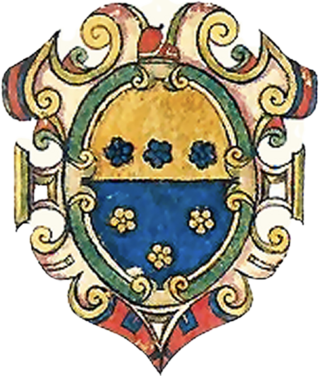
The House of Loredan-Santa Maria is a cadet branch of the noble House of Loredan which has produced many politicians, diplomats, military generals, naval captains, church dignitaries, writers and lawyers, and has played a significant role in the creation of modern opera with the Accademia degli Incogniti, also called the Loredanian Academy. The branch draws its name from the parishes of Santa Maria Formosa and Santa Maria dei Miracoli in Venice, around which it was historically settled. The progenitor of the branch is considered to be the famous admiral and procurator Pietro Loredan (1372-1438) by his sons Giacomo and Polo.

Doge Leonardo Loredan with Four Sons, also Portrait of the Loredan Family, is a large tempera-on-poplar painting by the Italian Renaissance master Giovanni Bellini depicting the noble Loredan family of Venice, namely Leonardo Loredan, Doge of Venice and his four sons, Lorenzo, Girolamo, Alvise, and Bernardo. It was painted in 1507 and is now on display at the Gemäldegalerie, part of the Berlin State Museums.
